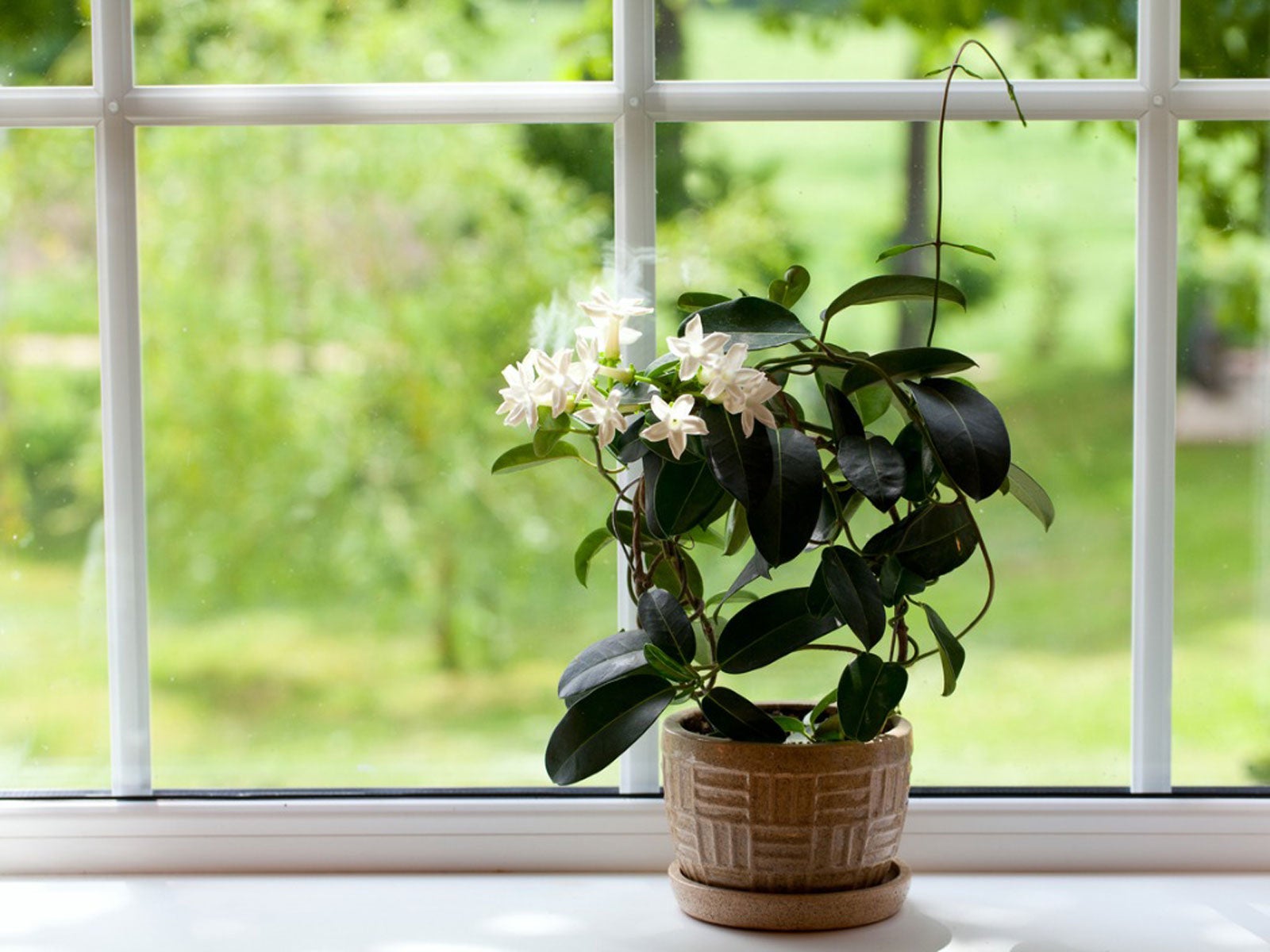Repotting Jasmine Plants: How And When To Repot Jasmines

Compared to most other houseplants, jasmine plants can go a long time before needing to be repotted. Jasmine likes to be snug in its container, so you really have to wait until it's almost pot bound before giving it a new home. Repotting jasmine is a straightforward process, not much different from repotting other plants, except for the extreme amount of roots you'll have to deal with. The secret to your success will be when to repot jasmines, not how to repot a jasmine. Get the timing right and your plant will continue growing year round.
When and How to Repot a Jasmine Plant
As a jasmine plant grows, the roots wrap themselves around inside the pot, much like any other plant. The proportion of roots to potting soil slowly changes, until you have more roots than soil. This means the amount of material that holds moisture is less than when you first planted. So when you water your jasmine plant and it needs watering again after two or three days, it's time to repot. Lay the plant on its side on some old newspaper inside or in the grass outdoors. Pull the root ball from the pot by tapping gently on the sides, then slide the roots out. Inspect the roots. If you see any black or dark brown pieces, cut them off with a clean, sharp utility knife. Loosen up the roots with your hands to unravel the tangles and to remove as much of the old potting soil as possible. Cut off any long strands of roots that have wrapped themselves around the root ball. Make four vertical slices in the sides of the root ball, from the top to the bottom. Space the slices out equally around the root ball. This will encourage fresh new roots to grow. Plant the jasmine with fresh potting soil in a container 2 inches (5 cm.) larger across than the one it previously lived in.
Jasmine Container Care
Once you get the plant settled in its new home, jasmine container care can be a bit tricky indoors. This is a plant that loves a lot of bright light, but not direct noonday sun. Most jasmines that do poorly after being brought inside in the fall do so because they're not getting enough light. Try putting the planter in an east window with a sheer curtain between the plant and the glass, or a southern-facing window with the same setup. Jasmine is a tropical plant, so it likes soil that's constantly moist, but not soaking wet. Never let the soil dry out completely. Check the moisture level by sticking your finger into the potting soil. If it's dry about half an inch (1 cm.) below the surface, give the plant a complete watering.
Sign up for the Gardening Know How newsletter today and receive a free copy of our e-book "How to Grow Delicious Tomatoes".